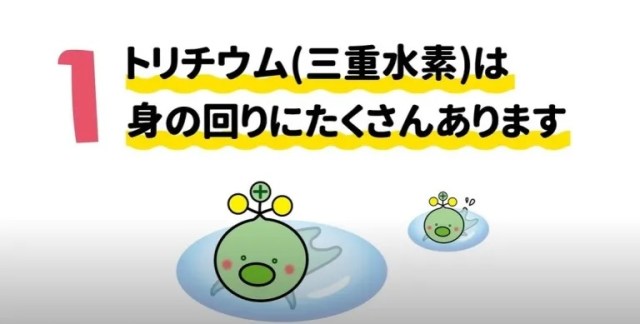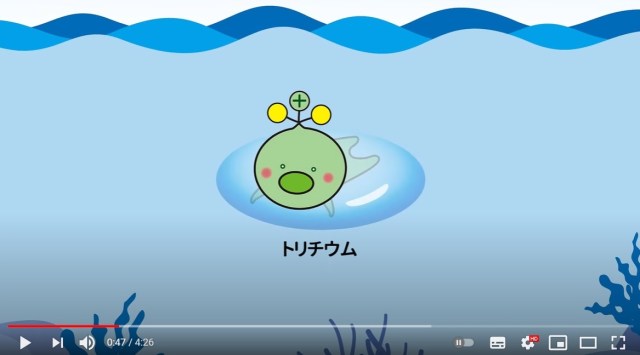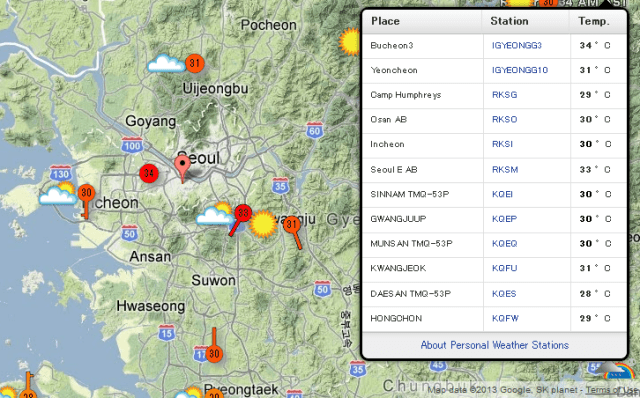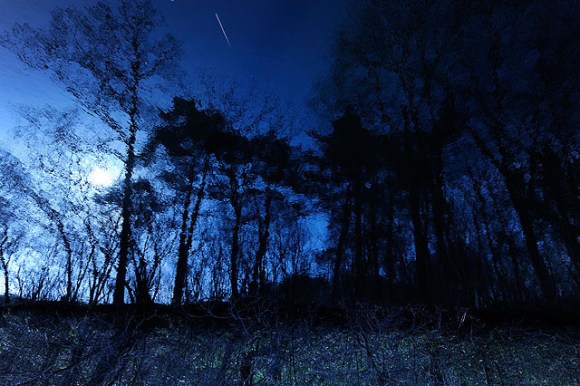Awareness campaign for plan to dump radioactive water into ocean lands creators in hot water.
nuclear power
Video released on same day approval is granted for waste water project at Fukushima nuclear power plant.
Sensors were installed last spring at Reactor 3 building, registered no shaking in this month’s 7.1-magnitude quake.
You may have heard that legendary Japanese novelist Haruki Murakami runs a blog where he answers questions sent in by readers. He’s tackled subjects ranging from the meaning of life to how to become a writer to what animal ability he’d like to have.
In one of his most recent questions, Murakami gives his opinion on a very touchy subject in Japan: nuclear power. Instead of calling out for reform or regulations though, he suggests one very simple change: that Japanese people refer to what they currently call “atomic energy power plants” as “nuclear power plants” instead.
In the midst of a severe heat wave, South Korea is facing a terrible energy crisis. And so, in an effort to save power, the government has taken the step of prohibiting the use of air conditioners – the very devices that few of us would ever dream of going without at this time of year – in public buildings for a number of days.
South Korea’s nuclear power industry, ranking fifth in the world in terms of generating capacity at 20,739 megawatts, continues to be rocked by scandal and misconduct. Currently nine of the country’s 23 plants are offline, meaning the supply capacity situation is the worst the country has ever experienced. Though Japan’s power supply is also in a precarious state with only 2 of its 50 nuclear plants operating, the situation in South Korea is said to be much more severe, and many fear power outages such as those experienced in September 2011 will recur.
Two years after Japan’s great earthquake and the Daiichi nuclear diaster comes a documentary that tells of the citizens who still can’t return home to Iitate Village in Fukushima due to the high levels of radiation.
Over at our sister site, Pouch, film critic Kaori Saito was given the opportunity to check out the film production of “Iitate Village, the Problem of Radiation and Returning Home” (in Japanese “Iitate-mura hoshano to kison”) before it was released to the Japanese public on May 4. Kaori comments that the work deserves particular credit for its delicate treatment of the continuing problem of radiation and the depiction of the struggles of the inhabitants affected.
For the readers who are unfamiliar with Iitate, it is a village that is located 30 kilometers from Fukushima Daiichi nuclear power plant within the prefecture of Fukushima. While it is reasonable to believe that the level of radioactive contamination would be comparatively low for an area this far from the power plant, due to the strong winds, snow and rain that occurred directly following the disaster, the actual levels of contamination far exceeded original estimates. For Japan and Iitate Village, unprecedented levels of radiation poured down, making the land uninhabitable and thus leaving the former residents no alternative but to abandon their village and seek refuge elsewhere.
Read More
It as been reported that engineers at Japan’s fast breeder reactor plant Monju made a mistake during testing of the plant’s emergency power generator, which subsequently resulted in the release of black smoke and the ringing of the plant’s fire alarm.
It has come to light that the Japanese government’s Fukushima Daiichi cleanup plan is failing due to problems concerning counterfeit contracts. The government is now left reassessing its human resource strategy and considering how to effectively secure the number of employees required to carry out the work. As it presently stands, more than half of the laborers employed at the nuclear site are suspected of being involved in counterfeit contract work.






 Majority of Japanese mayors say foreign residents are essential but most see good and bad effects
Majority of Japanese mayors say foreign residents are essential but most see good and bad effects Should you dip your cake in sake? One Japanese brewer says no, but actually yes【 Taste test】
Should you dip your cake in sake? One Japanese brewer says no, but actually yes【 Taste test】 Rakuten randomly offers 58 New Year’s osechi feasts in Japan, but did we get a star or a dud?
Rakuten randomly offers 58 New Year’s osechi feasts in Japan, but did we get a star or a dud? Four Shinto shrines to pray for love at in Japan to start the New Year
Four Shinto shrines to pray for love at in Japan to start the New Year Cup Noodle tries an authentic Jiro-style ramen, but something’s not quite right
Cup Noodle tries an authentic Jiro-style ramen, but something’s not quite right Sadako now has her own YouTube channel, hopes to upload videos about her daily life
Sadako now has her own YouTube channel, hopes to upload videos about her daily life How to make a pizza using a pack of ramen noodles【SoraKitchen】
How to make a pizza using a pack of ramen noodles【SoraKitchen】 Tokyo event lets you travel back in time, for free, to celebrate 100 years since Showa era start
Tokyo event lets you travel back in time, for free, to celebrate 100 years since Showa era start Cup Noodle releases new Tomica “car” collection
Cup Noodle releases new Tomica “car” collection Special edition UNO allows you to play with Mario and co. in a whole new way
Special edition UNO allows you to play with Mario and co. in a whole new way Starbucks Japan ready to get Year of the Horse started with adorable drinkware and plushies【Pics】
Starbucks Japan ready to get Year of the Horse started with adorable drinkware and plushies【Pics】 Hayao Miyazaki says Happy New Year to Studio Ghibli fans with new art for Year of the Horse
Hayao Miyazaki says Happy New Year to Studio Ghibli fans with new art for Year of the Horse Japanese beef bowl chain Sukiya’s 2026 Smile Box lucky bag basically pays for itself
Japanese beef bowl chain Sukiya’s 2026 Smile Box lucky bag basically pays for itself We found possibly the quietest Japanese-style hotel in Tokyo’s bustling Shinjuku district
We found possibly the quietest Japanese-style hotel in Tokyo’s bustling Shinjuku district The best Starbucks Japan Frappuccinos we want to drink again in 2026
The best Starbucks Japan Frappuccinos we want to drink again in 2026 We revisited Sweets Paradise after a decade to see if Japan’s dessert buffet still delivers
We revisited Sweets Paradise after a decade to see if Japan’s dessert buffet still delivers That time Seiji called JASRAC to ask why he didn’t get paid royalties for his song being on TV
That time Seiji called JASRAC to ask why he didn’t get paid royalties for his song being on TV Japan’s oldest largetooth sawfish in captivity back on display in Mie Prefecture
Japan’s oldest largetooth sawfish in captivity back on display in Mie Prefecture Pizza Hut Japan’s hot lucky bags are perfect for a New Year’s pizza party
Pizza Hut Japan’s hot lucky bags are perfect for a New Year’s pizza party 7-Eleven Japan starts new temporary luggage storage service in over 300 branches
7-Eleven Japan starts new temporary luggage storage service in over 300 branches Disillusionment at Tsukiji’s tourist-target prices led us to a great ramen restaurant in Tokyo
Disillusionment at Tsukiji’s tourist-target prices led us to a great ramen restaurant in Tokyo Starbucks teams up with 166-year-old Kyoto doll maker for Year of the Horse decorations【Photos】
Starbucks teams up with 166-year-old Kyoto doll maker for Year of the Horse decorations【Photos】 Tokyo considering law requiring more trash cans following litter increase in heavily touristed area
Tokyo considering law requiring more trash cans following litter increase in heavily touristed area Tokyo’s Tsukiji sushi neighborhood asks tour groups to stay away for the rest of the month
Tokyo’s Tsukiji sushi neighborhood asks tour groups to stay away for the rest of the month Japan may add Japanese language proficiency, lifestyle classes to permanent foreign resident requirements
Japan may add Japanese language proficiency, lifestyle classes to permanent foreign resident requirements Sanrio theme park in Japan announces plans to expand into a Sanrio resort
Sanrio theme park in Japan announces plans to expand into a Sanrio resort Stamina-destroying “Paralysis Noodles” are Tokyo’s newest over-the-top ramen innovation
Stamina-destroying “Paralysis Noodles” are Tokyo’s newest over-the-top ramen innovation Survey asks foreign tourists what bothered them in Japan, more than half gave same answer
Survey asks foreign tourists what bothered them in Japan, more than half gave same answer Japan’s human washing machines will go on sale to general public, demos to be held in Tokyo
Japan’s human washing machines will go on sale to general public, demos to be held in Tokyo Japan’s deadliest food claims more victims, but why do people keep eating it for New Year’s?
Japan’s deadliest food claims more victims, but why do people keep eating it for New Year’s? We deeply regret going into this tunnel on our walk in the mountains of Japan
We deeply regret going into this tunnel on our walk in the mountains of Japan Studio Ghibli releases Kodama forest spirits from Princess Mononoke to light up your home
Studio Ghibli releases Kodama forest spirits from Princess Mononoke to light up your home Major Japanese hotel chain says reservations via overseas booking sites may not be valid
Major Japanese hotel chain says reservations via overseas booking sites may not be valid Put sesame oil in your coffee? Japanese maker says it’s the best way to start your day【Taste test】
Put sesame oil in your coffee? Japanese maker says it’s the best way to start your day【Taste test】 No more using real katana for tourism activities, Japan’s National Police Agency says
No more using real katana for tourism activities, Japan’s National Police Agency says Starbucks Japan reveals new sakura drinkware collection, inspired by evening cherry blossoms
Starbucks Japan reveals new sakura drinkware collection, inspired by evening cherry blossoms Updated cherry blossom forecast shows extra-long sakura season for Japan this year
Updated cherry blossom forecast shows extra-long sakura season for Japan this year Sadako now has her own YouTube channel, hopes to upload videos about her daily life
Sadako now has her own YouTube channel, hopes to upload videos about her daily life How to make a pizza using a pack of ramen noodles【SoraKitchen】
How to make a pizza using a pack of ramen noodles【SoraKitchen】 Tokyo event lets you travel back in time, for free, to celebrate 100 years since Showa era start
Tokyo event lets you travel back in time, for free, to celebrate 100 years since Showa era start Cup Noodle releases new Tomica “car” collection
Cup Noodle releases new Tomica “car” collection Special edition UNO allows you to play with Mario and co. in a whole new way
Special edition UNO allows you to play with Mario and co. in a whole new way Japanese airlines offer discounted fares to international tourists
Japanese airlines offer discounted fares to international tourists Japanese beef bowl chain Sukiya’s 2026 Smile Box lucky bag basically pays for itself
Japanese beef bowl chain Sukiya’s 2026 Smile Box lucky bag basically pays for itself Tokyo’s Haneda Airport is adding a giant Godzilla statue to its international terminal
Tokyo’s Haneda Airport is adding a giant Godzilla statue to its international terminal We try all-you-can-eat raw eggs for 730 yen, turns out to be way better than it sounds
We try all-you-can-eat raw eggs for 730 yen, turns out to be way better than it sounds Original Evangelion Design Portfolio Gives us Ripped Robots, Smiling Shinji, and One Unbelievable Plot Divergence
Original Evangelion Design Portfolio Gives us Ripped Robots, Smiling Shinji, and One Unbelievable Plot Divergence Village Vanguard’s most expensive Black Lucky Bag sets an ominous tone for 2026
Village Vanguard’s most expensive Black Lucky Bag sets an ominous tone for 2026